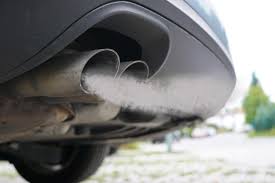1ZZFE VS 2ZRFE
1ZZFE VS 2ZRFE Battle!
When examining Toyota’s compact four-cylinder engines, the 1ZZ-FE and 2ZR-FE stand out as two of the most commonly used powerplants in the automaker’s lineup from the late 1990s through the 2010s. Found in vehicles like the Corolla, Matrix, Celica, and Scion xB, both engines were engineered for a balance of performance, fuel efficiency, and reliability. However, their design philosophies and real-world performance tell two different stories. While the 1ZZ-FE was a pioneer for its time, the 2ZR-FE represents a refined evolution in both power and economy.
The 1ZZ-FE, introduced in the late 1990s, was a 1.8-liter DOHC inline-4 with VVT-i (Variable Valve Timing with intelligence) on the intake side. It produced 120–140 horsepower and 122–130 lb-ft of torque, depending on the application and tuning. It was lightweight due to its aluminum block and was widely praised for its fuel economy, often achieving over 30 mpg in highway driving. However, it was never truly a performance engine, rev-happy driving wasn’t its strength, and it lacked the high-RPM punch found in more sport-tuned rivals. Still, it offered dependable and economical operation, especially in the Corolla and Matrix.
The 2ZR-FE, which replaced the 1ZZ-FE in the late 2000s, retained the same 1.8-liter displacement but improved in almost every metric. It introduced Dual VVT-i (on both intake and exhaust cams), higher compression, and better airflow. Power output increased to 132–140 horsepower and 128–136 lb-ft of torque, making it slightly more powerful across the rev range. It was also engineered for better fuel efficiency, often hitting 35–38 mpg on the highway in newer Corolla models. The 2ZR-FE feels more responsive, especially in city driving, due to the improved torque curve and variable valve timing range.
In terms of real-world performance, the 2ZR-FE is noticeably more refined while the 1ZZ-FE being the older, is pretty much seen as a more tuneable option in the aftermarket sense. Stock for stock, acceleration is more linear, throttle response is sharper, and the engine holds revs better with the 2ZR-FE. While neither engine is built for racing, the 2ZR is better suited for modern driving expectations, especially when paired with newer transmissions like the CVT. The 1ZZ-FE, when pushed, can feel underwhelming, particularly in heavier cars or with automatic gearboxes. On the other hand, the 2ZR-FE delivers better low-end grunt and a more consistent pull, especially in urban traffic or freeway merging situations.
From a fuel economy standpoint, both engines were designed with efficiency in mind, but the 2ZR-FE has the upper hand. Thanks to improved combustion technology, lower internal friction, and better ECU tuning, the 2ZR-FE can exceed the 1ZZ-FE in mpg across most driving scenarios. Additionally, the 2ZR often runs at lower RPMs at cruising speed, contributing to quieter and more efficient operation. Toyota's shift to CVT (Continuously Variable Transmission) in cars like the Corolla with the 2ZR-FE also enhanced efficiency compared to the older 4-speed autos used with the 1ZZ.
In conclusion, the 2ZR-FE is a clear step forward from the 1ZZ-FE in terms of both performance and fuel economy. It retains the reliability Toyota engines are known for while offering more power, better drivability, and improved efficiency. The 1ZZ-FE still holds value in the used car and project car world, particularly for those looking for a simple, proven engine. But for daily drivers or those seeking a more modern powerplant without sacrificing economy, the 2ZR-FE is the superior choice.




Comments
Post a Comment